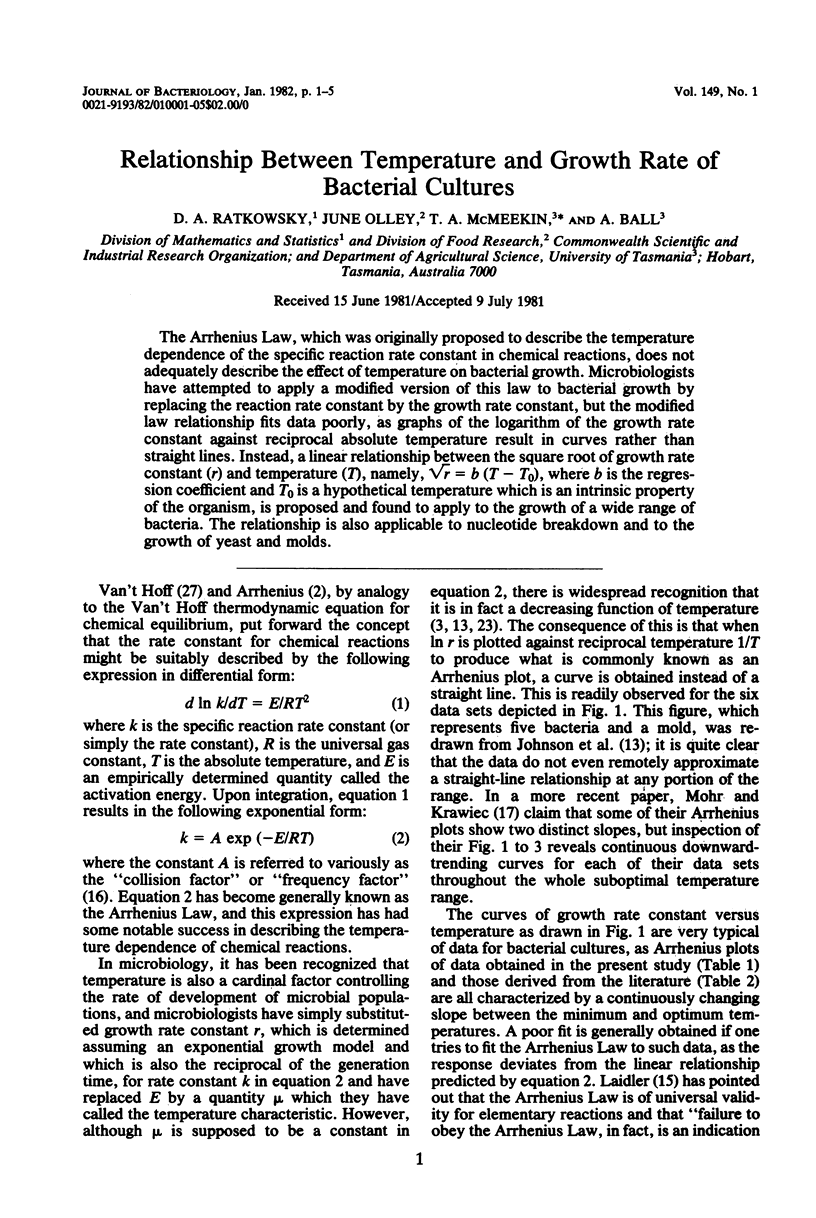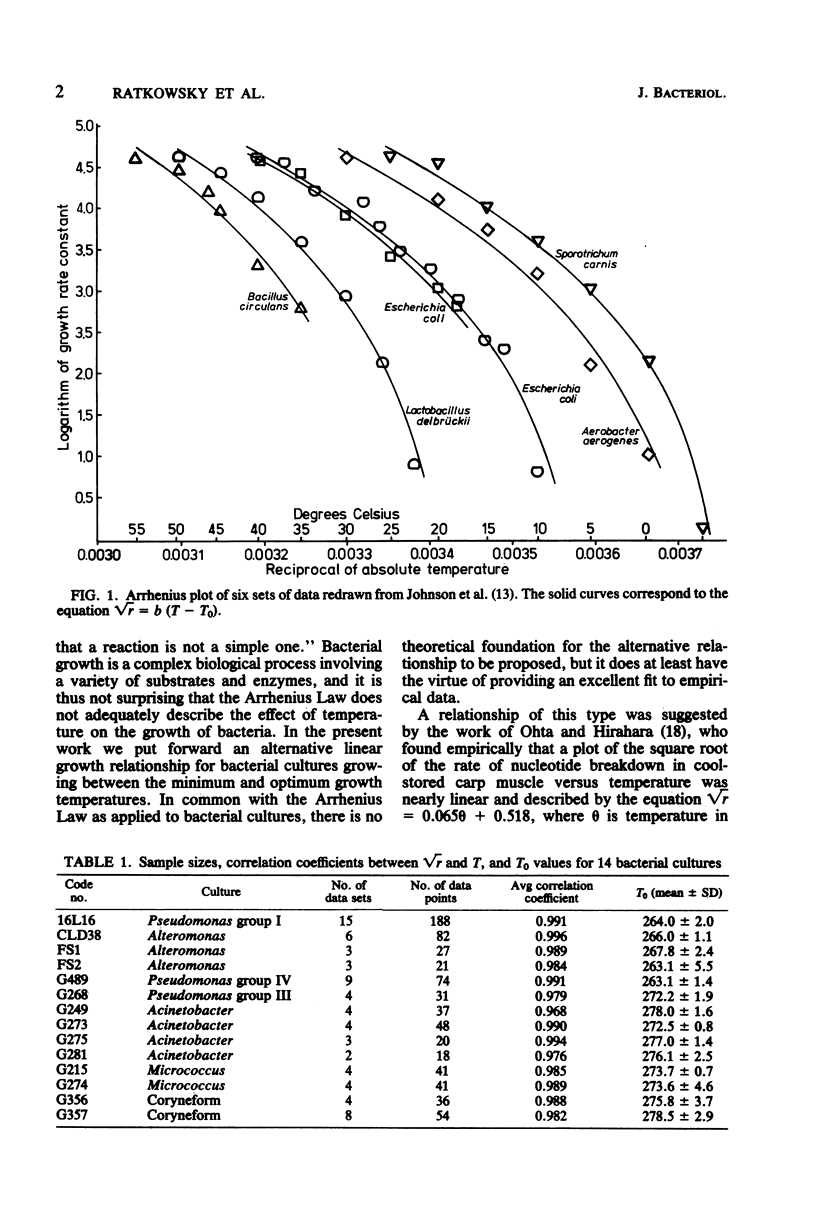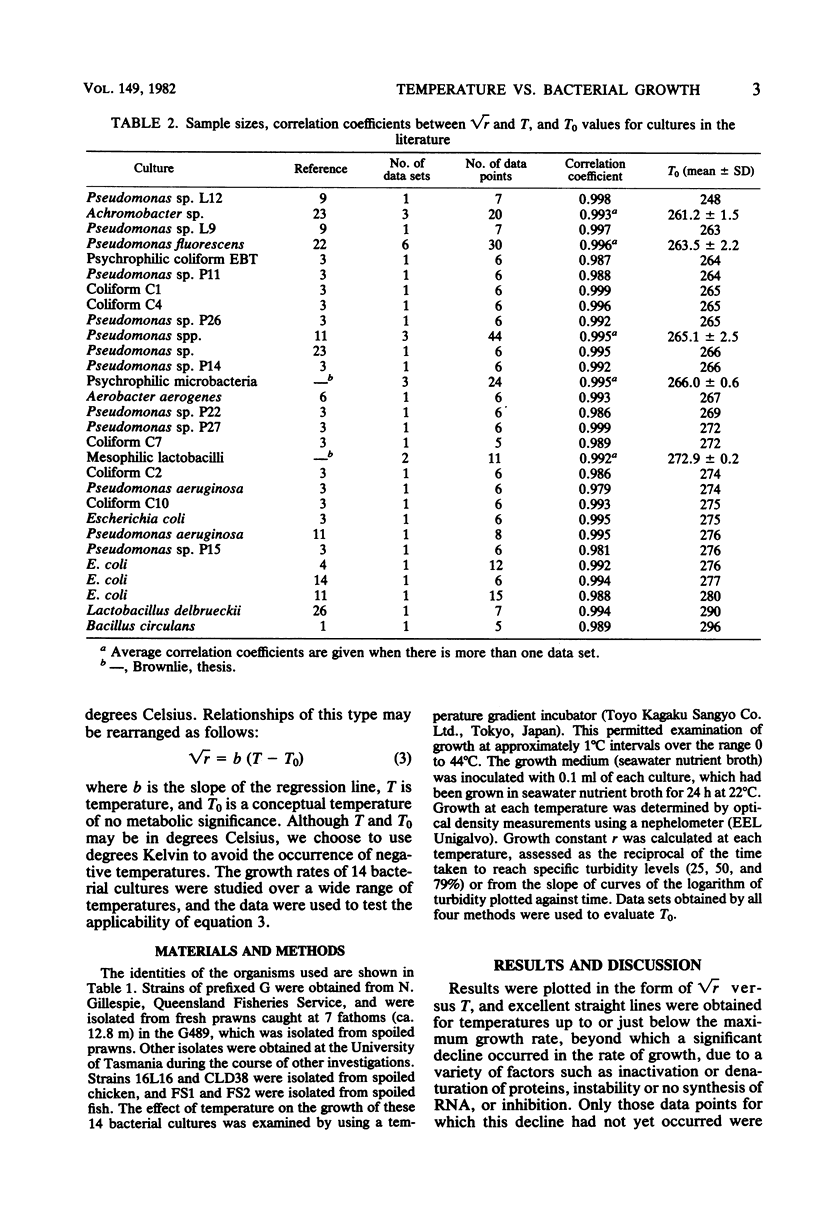Abstract
The Arrhenius Law, which was originally proposed to describe the temperature dependence of the specific reaction rate constant in chemical reactions, does not adequately describe the effect of temperature on bacterial growth. Microbiologists have attempted to apply a modified version of this law to bacterial growth by replacing the reaction rate constant by the growth rate constant, but the modified law relationship fits data poorly, as graphs of the logarithm of the growth rate constant against reciprocal absolute temperature result in curves rather than straight lines. Instead, a linear relationship between in square root of growth rate constant (r) and temperature (T), namely, square root = b (T - T0), where b is the regression coefficient and T0 is a hypothetical temperature which is an intrinsic property of the organism, is proposed and found to apply to the growth of a wide range of bacteria. The relationship is also applicable to nucleotide breakdown and to the growth of yeast and molds.
Full text
PDF




Selected References
These references are in PubMed. This may not be the complete list of references from this article.
- ALLEN M. B. The thermophilic aerobic sporeforming bacteria. Bacteriol Rev. 1953 Jun;17(2):125–173. doi: 10.1128/br.17.2.125-173.1953. [DOI] [PMC free article] [PubMed] [Google Scholar]
- Baig I. A., Hopton J. W. Psychrophilic properties and the temperature characteristic of growth of bacteria. J Bacteriol. 1969 Oct;100(1):552–553. doi: 10.1128/jb.100.1.552-553.1969. [DOI] [PMC free article] [PubMed] [Google Scholar]
- GREENE V. W., JEZESKI J. J. Influence of temperature on the development of several psychrophilic bacteria of dairy origin. Appl Microbiol. 1954 Mar;2(2):110–117. doi: 10.1128/am.2.2.110-117.1954. [DOI] [PMC free article] [PubMed] [Google Scholar]
- Gill C. O., Newton K. G. The development of aerobic spoilage flora on meat stored at chill temperatures. J Appl Bacteriol. 1977 Oct;43(2):189–195. doi: 10.1111/j.1365-2672.1977.tb00742.x. [DOI] [PubMed] [Google Scholar]
- Hanus F. J., Morita R. Y. Significance of the temperature characteristic of growth. J Bacteriol. 1968 Feb;95(2):736–737. doi: 10.1128/jb.95.2.736-737.1968. [DOI] [PMC free article] [PubMed] [Google Scholar]
- Harder W., Veldkamp H. Competition of marine psychrophilic bacteria at low temperatures. Antonie Van Leeuwenhoek. 1971;37(1):51–63. doi: 10.1007/BF02218466. [DOI] [PubMed] [Google Scholar]
- INGRAHAM J. L. Growth of psychrophilic bacteria. J Bacteriol. 1958 Jul;76(1):75–80. doi: 10.1128/jb.76.1.75-80.1958. [DOI] [PMC free article] [PubMed] [Google Scholar]
- Mohr P. W., Krawiec S. Temperature characteristics and Arrhenius plots for nominal psychrophiles, mesophiles and thermophiles. J Gen Microbiol. 1980 Dec;121(2):311–317. doi: 10.1099/00221287-121-2-311. [DOI] [PubMed] [Google Scholar]
- OLSEN R. H., JEZESKI J. J. SOME EFFECTS OF CARBON SOURCE, AERATION, AND TEMPERATURE ON GROWTH OF A PSYCHROPHILIC STRAIN OF PSEUDOMONAS FLUORESCENS. J Bacteriol. 1963 Sep;86:429–433. doi: 10.1128/jb.86.3.429-433.1963. [DOI] [PMC free article] [PubMed] [Google Scholar]
- Shaw M. K. Effect of abrupt temperature shift on the growth of mesophilic and psychrophilic yeasts. J Bacteriol. 1967 Apr;93(4):1332–1336. doi: 10.1128/jb.93.4.1332-1336.1967. [DOI] [PMC free article] [PubMed] [Google Scholar]


